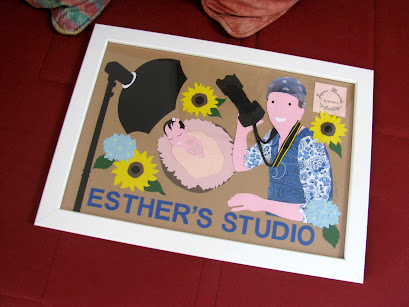David Ben Gurion speaking at the opening of the Sde Boker Field School, 1960s.
David Rubinger was an Israeli photographer and photojournalist whose famous photo of three Israeli paratroopers after the recapture the
Western Wall in the
Six-Day War has become a defining image of the conflict. I recently enjoyed an exhibition of his work, "David Rubinger/I Captured the Truth, 1947-1997", at the Eretz Israel Museum in Tel Aviv. The exhibition captures 50 years of the veteran Israeli photographer's most iconic work, and also allows the visitor a glimpse of the past, to moments of hope and despair in the State of Israel.
Rubinger was born in Vienna, Austria in 1924. When he was in high school, Nazi Germany annexed Austria in the
Anschluss and with the help of
Youth Aliyah, he escaped to
Mandatory Palestine via Italy, where he settled in a
Jordan Valley kibbutz. His father had already fled to England, but his mother died in the Holocaust. In the Second World War he served with the
Jewish Brigade of the
British Army in North Africa and Europe. While on leave in Paris, a French girlfriend gave him an American-made Argus 35mm camera as a gift, and he discovered he enjoyed photography. He bought his next camera, a Leica, in 1946, in post-war Germany - paying for it, he said, with 200 cigarettes and a kilo of coffee. Rubinger's first professional photo was of Jewish youth climbing a British tank to celebrate the
United Nations Partition Plan for Palestine, creating the Israeli state.
After the war, he visited his father in England and learned that he had other relatives in Germany. There, he met his cousin Anni and her mother, who had survived the Holocaust. He offered to marry her to secure her emigration to Palestine, but the marriage of convenience ended up lasting more than 50 years until her death. The couple had two children, five grandchildren, and two great-grandchildren.
Upon his return to Israel, Rubinger opened a photography business in Jerusalem, but broke into photojournalism in 1951 when he was offered a job at the weekly news magazine
HaOlam HaZeh. Two years later he joined the staff of the Hebrew-language daily,
Yedioth Ahronoth, and later the
The Jerusalem Post. His big break came in 1954 when he joined
Time-Life as a stringer, and two years later was given his first major assignment for Life magazine when asked to cover Israel's campaign in the Sinai during the Suez crisis. As Time-Life's primary photographer for the region, Rubinger covered all of Israel's wars and was given unprecedented access to governmental leaders. He ended up working for them for more than 50 years.
He also served as the Knesset's official photographer for 30 years and was the only photographer granted the right to enter and take photos in the Knesset Members' private dining room.
Left. Lifesavers “Emil and Yoske”, 1952; Yosef Weisman and Amiel Avneri, Tel Aviv.
Right, June 7, 1967: Three paratroopers mere minutes after taking the Western Wall, Jerusalem, during the Six Day War.
Rubinger's signature photograph is of paratroopers at the Western Wall, shortly after its recapture by Israeli forces in the Six-Day War, above, right. Shot from a low angle, the faces of (left to right) Zion Karasenti, Yitzhak Yifat, and Haim Oshri are framed against the wall, gazing off into the distance. Prior to taking the photograph, Rubinger had been at
el-Arish on the
Sinai Peninsula when he heard a rumour that something big was going to happen in Jerusalem. He hopped aboard a helicopter ferrying wounded soldiers to
Beersheba, then drove the rest of the way, at one point asking a hitchhiking soldier he had picked up to drive because he was too sleepy. He arrived in Jerusalem's Old City and, after a quick visit with his family, made his way to the wall. The space between the wall and the buildings in front of it was very narrow, so he lay down to get a shot of the wall itself, when the paratroopers walked by and he took several shots of them.
As part of his agreement with the
Israeli Army allowing him front-line access, he turned the negatives over to the government, who distributed it to everyone for a mere
I£2 each. It was then widely pirated as well. Although Rubinger was upset about his work being stolen, the photo's widespread distribution made it famous.
Haim Bar-Lev, Ariel Sharon and Yeshayahu Gavish arriving in the Negev, 1967.
Football game between Israel and Wales, Ramat Gan stadium, 1959.
In Foreign Minister Golad Meir's kitchen at her home, 1956.
Rubinger was also known for his intimate portraits of Israel's leaders, some in tender moments with their spouses or in their homes. His memorable shots included a quiet moment between Marc Chagall and Golda Meir, during the unveiling of the artist's work in the Knesset; Moshe Dayan and Yitzhak Rabin sleeping in an aircraft at the end of the Six-Day War, Jordanian and Israeli soldiers shaking hands, and the dead hand of an Egyptian soldier rising reproachfully skywards out of a sand dune, his helmet beside him. He later revealed one trick of the trade: He always made sure to take a few extra photos of the leaders with their security guards in the frame, then sent the guards copies, ensuring good access the next time.
Paula and David Ben Gurion at their hut in Sde Boker, 1953.
In 1994 Rubinger was commissioned by
Harper Collins to spend a day with the then prime minister,
Yitzhak Rabin, for a book, 'A Day in the Life of Israel'. A year later he would take the last photograph concerning him, of the bloodstained lyrics of
Shir Lashalom, or
Song of Peace, that Rabin had in his pocket on the night he was assassinated in Tel Aviv.
Rubinger was awarded the
Israel Prize in communications for 1997, the first year it was awarded in that category. He continued to photograph, taking his camera everywhere. Even in old age he rarely put it down. In 2007 his memoir 'Israel Through My Lens: Sixty Years as a Photojournalist' was published. Finally, in 2009, at the age of 85, Rubinger retired from Time-Life.
Rubinger died on 2nd March 2017 at the age of 92. On 5th March, Yedioth Ahronoth published a 21-page special photographic supplement in colour of selected photographs spanning his career. Meticulous about recording and cataloguing his thousands of images, in 1999 Rubinger had sold his personal archive of 500,000 negatives to the leading Israeli newspaper where he had been briefly employed in the 1950s, for $750,000. Interestingly, thirty percent of the archives are only pictures of football, as Rubinger was the official photographer for
Beitar Jerusalem.
An IDF soldier patrolling the main street of Ramallah, 1978.
Israel's Menachem Begin and Anwar Sadat of Egypt meet after signing the peace treaty in Aswan, Egypt,1980.





























































